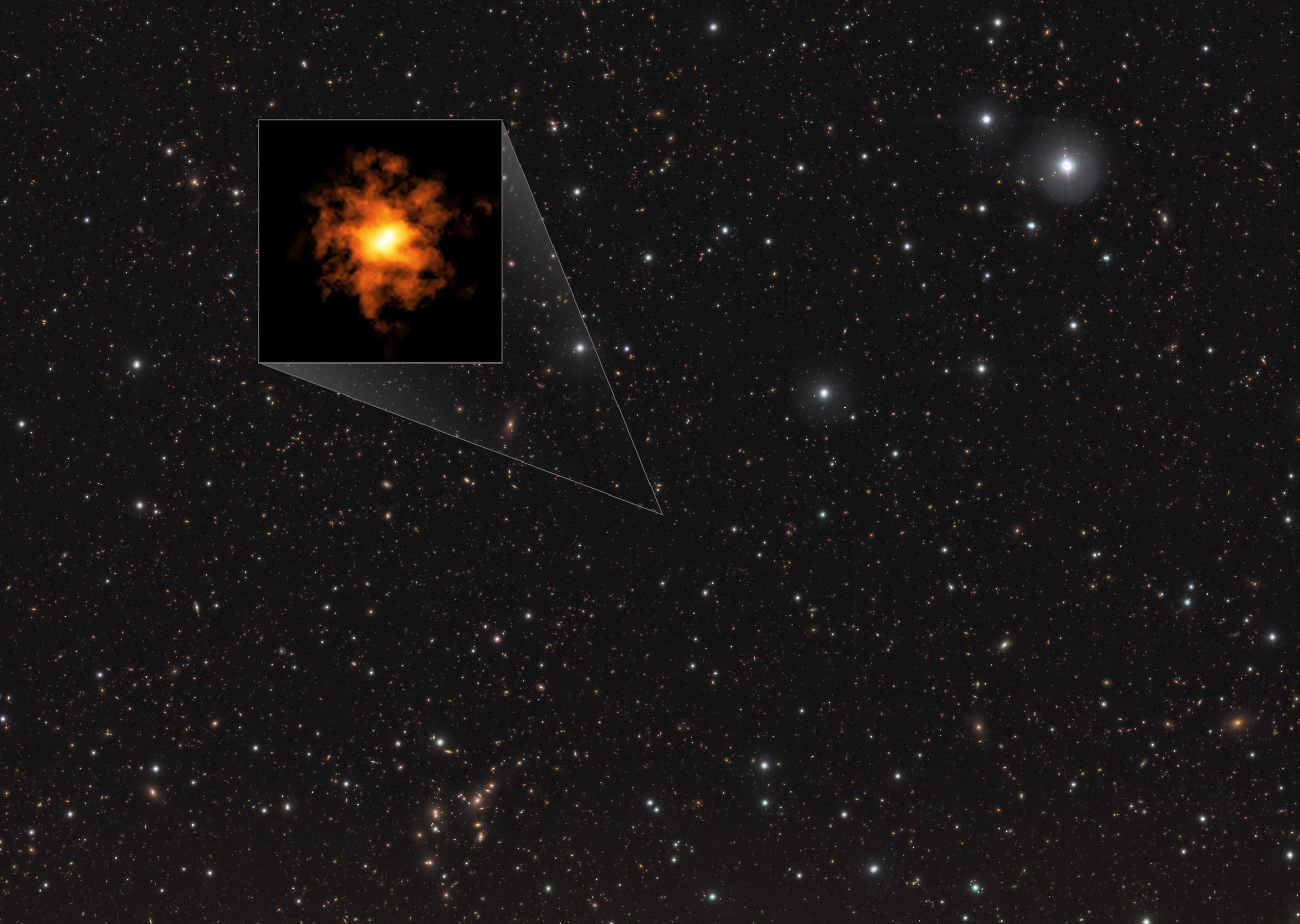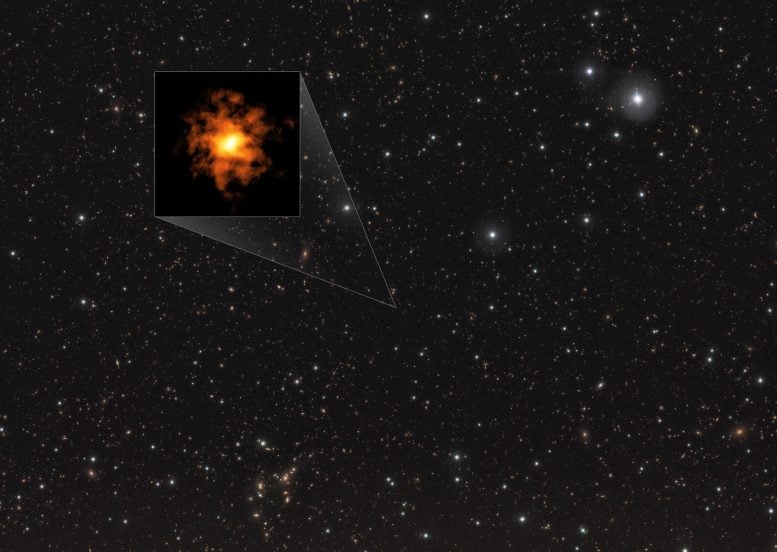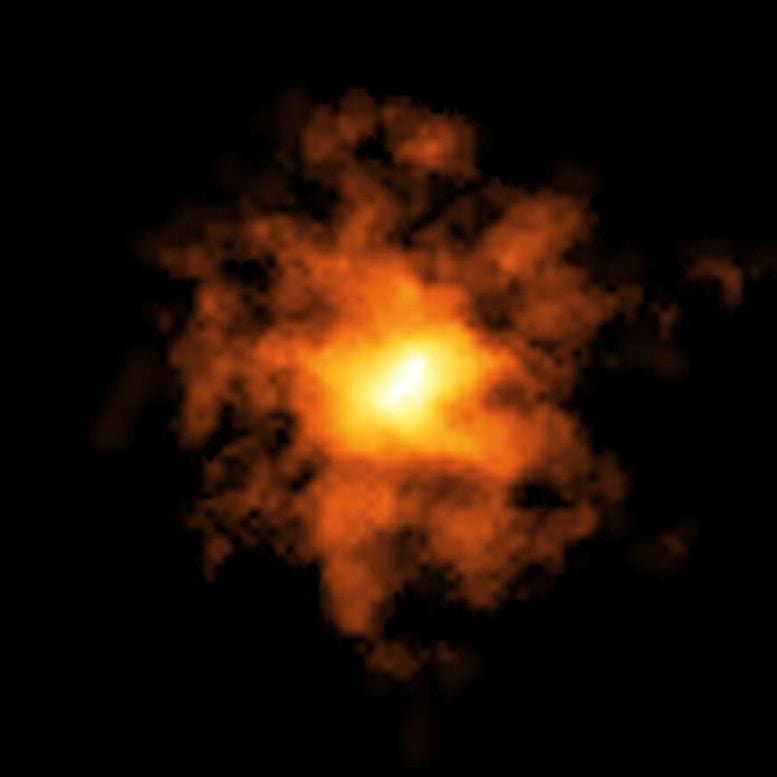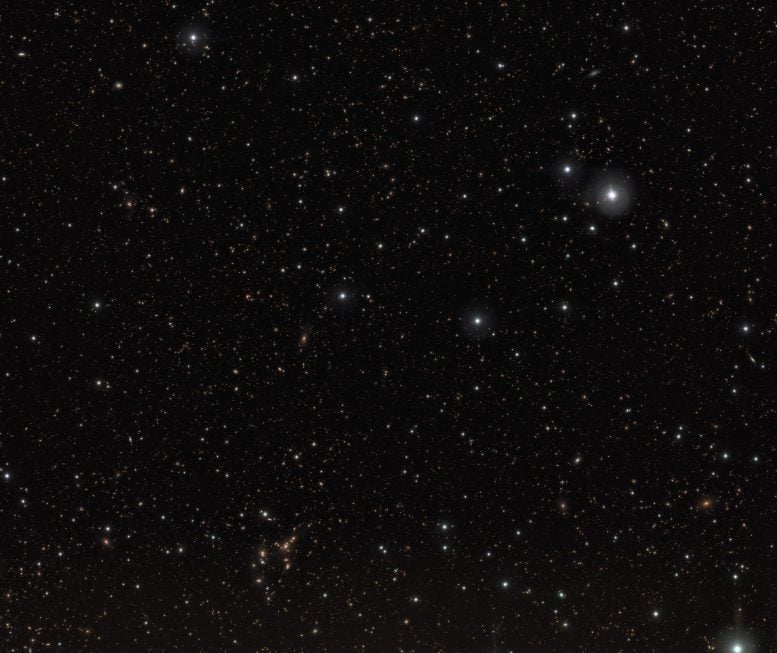

REBELS-25, a galaxy resembling the Milky Way found in the early universe, defies traditional models with its orderly structure, indicating rapid galactic evolution.
Astronomers have discovered the most distant Milky-Way-like galaxy ever observed, named REBELS-25. This disc galaxy appears as orderly as those seen in the present day, yet it dates back to when the Universe was only 700 million years old. This discovery challenges prevailing theories of galaxy formation, which suggest that such early galaxies should exhibit more chaotic structures. The rotation and structure of REBELS-25 were revealed using the Atacama Large Millimeter/submillimeter Array (ALMA), operated in partnership with the European Southern Observatory (ESO).
Early Galaxy Formation Challenged by New Findings
The galaxies we see today have come a long way from their chaotic, clumpy counterparts that astronomers typically observe in the early Universe. “According to our understanding of galaxy formation, we expect most early galaxies to be small and messy looking,” says Jacqueline Hodge, an astronomer at Leiden University, the Netherlands, and co-author of the study.
REBELS-25: A Cosmic Anomaly
These messy, early galaxies merge with each other and then evolve into smoother shapes at an incredibly slow pace. Current theories suggest that, for a galaxy to be as orderly as our own Milky Way — a rotating disc with tidy structures like spiral arms — billions of years of evolution must have elapsed. The detection of REBELS-25, however, challenges that timescale.

Discovering the Unexpected: REBELS-25’s Orderly Rotation
In the study, set for publication today (October 7) in Monthly Notices of the Royal Astronomical Society, astronomers found REBELS-25 to be the most distant strongly rotating disc galaxy ever discovered. The light reaching us from this galaxy was emitted when the Universe was only 700 million years old — a mere five percent of its current age (13.8 billion) — making REBELS-25’s orderly rotation unexpected.
“Seeing a galaxy with such similarities to our own Milky Way, that is strongly rotation-dominated, challenges our understanding of how quickly galaxies in the early Universe evolve into the orderly galaxies of today’s cosmos,” says Lucie Rowland, a doctoral student at Leiden University and first author of the study.

Follow-up Observations Confirm Galaxy’s Advanced Features
REBELS-25 was initially detected in previous observations by the same team, also conducted with ALMA, which is located in Chile’s Atacama Desert. At the time, it was an exciting discovery, showing hints of rotation, but the resolution of the data was not fine enough to be sure. To properly discern the structure and motion of the galaxy, the team performed follow-up observations with ALMA at a higher resolution, which confirmed its record-breaking nature.
“ALMA is the only telescope in existence with the sensitivity and resolution to achieve this,” says Renske Smit, a researcher at Liverpool John Moores University in the UK and also a co-author of the study.
Implications for Cosmology and Future Observations
Surprisingly, the data also hinted at more developed features similar to those of the Milky Way, like a central elongated bar, and even spiral arms, although more observations will be needed to confirm this. “Finding further evidence of more evolved structures would be an exciting discovery, as it would be the most distant galaxy with such structures observed to date,” says Rowland.
These future observations of REBELS-25, alongside other discoveries of early rotating galaxies, will potentially transform our understanding of early galaxy formation, and the evolution of the Universe as a whole.

Reference: “REBELS-25: Discovery of a dynamically cold disc galaxy at z = 7.31” by Lucie E Rowland, Jacqueline Hodge, Rychard Bouwens, Pavel E Mancera Piña, Alexander Hygate, Hiddo Algera, Manuel Aravena, Rebecca Bowler, Elisabete da Cunha, Pratika Dayal, Andrea Ferrara, Thomas Herard-Demanche, Hanae Inami, Ivana van Leeuwen, Ilse de Looze, Pascal Oesch, Andrea Pallottini, Siân Phillips, Matus Rybak, Sander Schouws, Renske Smit, Laura Sommovigo, Mauro Stefanon and Paul van der Werf, 7 October 2024, Monthly Notices of the Royal Astronomical Society.
DOI: 10.1093/mnras/stae2217
The observations were conducted as part of the ALMA Large Program REBELS: Reionization Era Bright Emission Lines Survey.
The team is composed of L. E. Rowland (Leiden Observatory, Leiden University, the Netherlands [Leiden]), J. Hodge (Leiden), R. Bouwens (Leiden), P. M. Piña (Leiden), A. Hygate (Leiden), H. Algera (Astrophysical Science Center, Hiroshima University, Japan [HASC]; National Astronomical Observatory of Japan, Japan), M. Aravena (Núcleo de Astronomía, Facultad de Ingeniería y Ciencias, Universidad Diego Portales, Chile), R. Bowler (Jodrell Bank Centre for Astrophysics, University of Manchester, UK), E. da Cunha (International Centre for Radio Astronomy Research, University of Western Australia, Australia; ARC Centre of Excellence for All Sky Astrophysics in 3 Dimensions), P. Dayal (Kapteyn Astronomical Institute, University of Groningen, the Netherlands), A. Ferrara (Scuola Normale Superiore, Italy [SNS]), T. Herard-Demanche (Leiden), H. Inami (HASC), I. van Leeuwen (Leiden), I. de Looze (Sterrenkundig Observatorium, Ghent University, Belgium), P. Oesch (Department of Astronomy, University of Geneva, Switzerland; Cosmic Dawn Center, Denmark), A. Pallottini (SNS), S. Phillips (Astrophysics Research Institute, Liverpool John Moores University, UK [LJMU]), M. Rybak (Faculty of Electrical Engineering, Delft University of Technology, the Netherlands; Leiden; Netherlands Institute for Space Research, the Netherlands), S. Schouws (Leiden), R. Smit (LJMU), L. Sommovigo (Center for Computational Astrophysics, Flatiron Institute, USA), M. Stefanon (Departament d’Astronomia i Astrofísica, Universitat de València, Spain; Grupo de Astrofísica Extragaláctica y Cosmología, Universitat de València, Spain), P. van der Werf (Leiden).